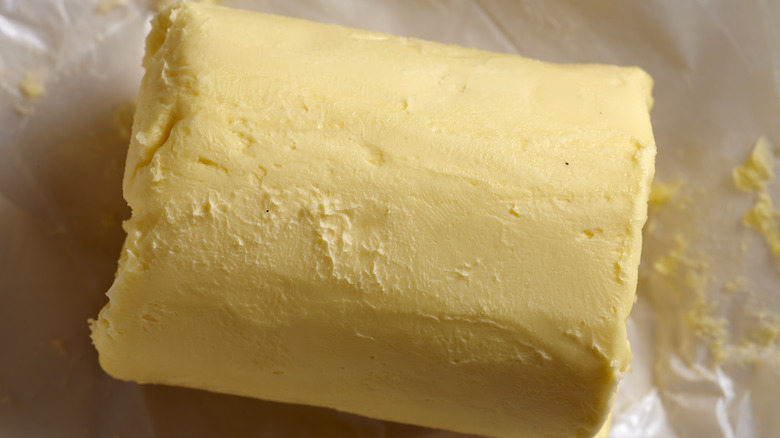Hand-Rolled Butter Deserves A Spot In Your Kitchen
Good things come in unexpected packages, and such is the case with the kind of butter that can be purchased in the shape of a solid log. Hand-rolled butter can offer the perfect amount of salty and delicious sweetness to your next slice of toast, and if you're looking to take your grilled cheeses up a notch, hand-rolled butter can help you do so with ease. The decadent, delicious dairy product can even give your morning cup of coffee an enjoyable edge.
Hand-rolled butter varieties are often just that, butter that has been made by hand without the use of a machine. The result is a silky, complex texture wrapped and sold in parchment paper instead of a plastic container or bricks that are molded into perfectly sized pieces. The Amish favor this kind of butter for good reason, as all-natural ingredients are used to make the creamy product and food paired with the whippy spread shines a bit brighter when coated with the decadent spread.
Using simple traditions to flavor recipes
Hand-rolled butter varieties often contain more butterfat than other American types of butter, rivaling the richness found in European varieties with close to an 85% butterfat content. The milk used to make hand-rolled butter is often pasteurized, and some dairies insist that butter rolled in the early hours of the morning reigns supreme, as temperature matters when the delicate spread is wrapped up in paper to be sold. Too hot, and the creamy butter will melt upon touch; too cold, and the light, whippy product becomes difficult to manipulate. The product becomes something of an art, requiring a dedicated, determined hand to sculpt and wrap each piece to creamy perfection.
While hand-rolled butter browns excellently in a pan and can add richness to your favorite baking recipes, butter this good warrants special attention. When spooned onto flaky croissants or spread across a freshly baked baguette, your butter preferences may forever be changed after sampling this decadent ingredient.

